Which heating battery is better: cast iron or bimetallic radiators, main characteristics and selection tips
Content:
The heating system is one of the most important communications in any room. The heating efficiency directly depends on the assembly and the correct choice of which battery is better: cast iron or bimetallic. Nowadays there are a huge number of radiators on the market. The usual cast iron batteries are considered traditional, but at the moment bimetallic analogues are more in demand.
What is a cast iron battery
A cast iron battery is a prefabricated product that includes cast sections or “teeth” of equal size (from two to a couple of dozen). The selection of dimensions depends on the room where the battery will be installed. Each section is manufactured separately in the metallurgical production of gray cast iron castings. It is a hollow product of oval or round cross-section. When assembled, the sections form internal cavities through which hot water circulates.
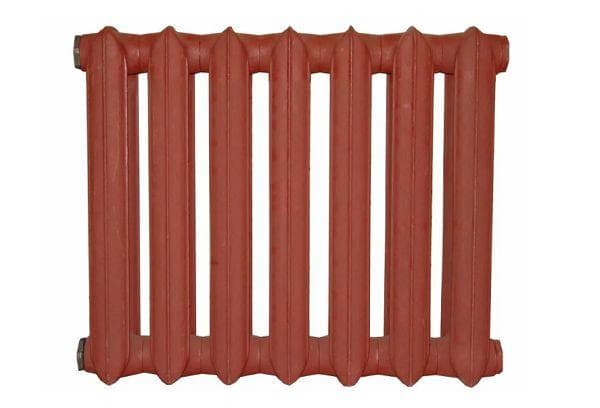
The structures themselves come in two types:
- single-channel;
- two-channel.
The dimensions of a cast iron battery depend on the length of the number of sections, and on the dimensions in height - from 350 mm to 1500 mm. In each section there is a channel for the movement of coolant.The section itself can be one- or two-channel. After assembling the individual elements using special nipples, they are sealed with paronite or rubber gaskets designed for high temperatures. The dimensions of a cast iron radiator vary in the following ranges:
- depth - 50-140 cm;
- height – 35-140 cm;
- the width depends on how many sections are included in the radiator.
The easiest way to determine how many sections are needed for heating is to calculate the area of the room. It is generally accepted that approximately 100 W of thermal energy is needed to heat each square meter. The total area must be multiplied by this figure. The resulting number is then divided by the power of the specific battery model.
For example, for a room of 16 m22 model MS-140-M2-500 will be purchased, each section of which has a thermal power of 160 W, the calculation will look like this:
- area (16 sq. m) × 100W = 1600W (this amount of thermal energy will be required to heat this room);
- 1600W/160W (power of one section) = 10 (number of sections required for heating).
If you receive fractional numbers in calculations, you should round them up. This technique does not take into account other factors and criteria that have a serious impact on the efficiency of the heating system.
What is a bimetallic battery
This design uses two metal alloys with different chemical and technical characteristics. The internal part of the heater is made of stainless steel. It can withstand prolonged contact with water and has high anti-corrosion properties.The strength of the material allows it to withstand high pressure (and its changes) in the network.
The outer part of the radiator is made of aluminum - a metal with high heat transfer. Due to the combination of two metals in one heating element, its efficiency is significantly increased.
Such models are especially convenient for apartments with central heating. They experience sudden surges in fluid pressure in the system. It is also difficult to control the quality of the coolant, and the corrosion resistance of cast iron may not be sufficient. There are two types of bimetallic radiator according to their type of design:
- Sectional model. This is a prefabricated structure, which includes individual sections. Such a battery makes it possible to control the power of the radiator by changing the number of sections. They are connected with special fasteners and seals. The main disadvantage is the joints where leakage can occur. These places are exposed to high temperature, pressure, and corrosion.
- Monolithic radiator. Such models are highly reliable and stable, and have technical characteristics better than their sectional counterparts. They have no joints, which means they can withstand higher physical loads.
There are three main elements of a bimetallic radiator. The first is considered to be the core. This part is filled with water (coolant) and has maximum contact with the aggressive environment. It is usually made of copper or steel. These two metals have the main advantages of corrosion resistance and high resistance. There are also collectors and heat-conducting channels made of steel. These parts are needed to connect the radiator to the heating system.
The aluminum case quickly changes its temperature, which makes it possible to regulate its heat transfer. The structure itself consists of two steel pipes located horizontally and connected by special vertical jumpers, also made of steel. A heat-carrying fluid passes through them.
The system has a top coating of aluminum fin plates or a monolithic body. The heat exchanger has a more complex design due to the presence of convection ducts in it. During manufacturing, these sections are connected to each other using spot welding. Gaskets and steel nipples are used during assembly.
What is the difference
One of the main features of cast iron is its ability to heat up slowly. This phenomenon is called thermal inertia. If you need to warm up a cold room, it may take some time. According to this criterion, cast iron is much inferior to its bimetallic counterparts, which heat up very quickly. But it should be noted that they also cool down very quickly; the cast iron version of the radiator cools down much more slowly and continues to heat the room even after the heating is turned off, maintaining a comfortable atmosphere in the room.
The coolant has a high temperature and is heated in boilers, then it is supplied through a centralized heating system directly to the apartments. The steel core of the bimetallic battery interacts with the hot liquid and is necessary to transfer heat to the aluminum body, which performs the main function of the radiator - heating the room.
Comparison in the table
The table below compares the main characteristics of the two types of heating radiators.
| Metal | Cast iron | Bimetal |
| Price (average for 5-section model) | From 8000 rubles | From 5000 rubles |
| Characteristics | Pressure up to 18 atm, average coolant temperature up to 150°C, service life up to 50 years | Pressure up to 10 Atm, coolant temperature up to 110°C, service life up to 25 years |
| Advantages | High corrosion resistance; wide internal channels rarely become clogged | Light weight, variety in design |
| Flaws | Very heavy weight, fragility, small selection of cheap models | Low corrosion resistance |
Pros and cons of a cast iron battery
The heat transfer coefficient of a cast iron battery ranges from 110 W to 160 W. Heating the casing makes it possible to radiate heat into the air space surrounding it. Warmed-up objects nearby also begin to heat up the space, which means the room becomes warmer.
Cast iron products also have low cost, which is a significant advantage. Modern bimetallic analogues, especially from European manufacturers, may not be affordable for every consumer. Cast iron has no special requirements for the quality of the coolant; any water can be poured into the system.
Due to the large wall thickness, cast iron batteries are designed for high pressure in the system. In addition to this indicator, cast iron can also withstand water hammer. Such a radiator is collapsible, so the owner can set or adjust the level of thermal power he needs. This is done by adding or removing a section.
Among the disadvantages, it can be noted that the installation of a cast iron radiator must be carried out in accordance with mandatory requirements - maintaining the gaps between the radiator itself, walls, window sill, floor and other surfaces and objects.
The most important disadvantage of a cast iron radiator is its appearance, which has bothered many people over its long period of use. It is difficult to fit an old Soviet radiator into a modern renovation with expensive finishes. But this question is a matter of taste for a particular person.
Modern manufacturers, including foreign ones, produce products not only in the traditional form; there are models that can be called a masterpiece made of cast iron. They may have cast decorations, monograms, patterns and other decorative elements on their surface. Special decorative legs can also be installed, and the radiators themselves are available in a wide range of colors. But the cost of such products is much higher.
Pros and cons of a bimetallic battery
Steel has a thermal conductivity similar to cast iron. The wall thickness of bimetallic radiators is much smaller than that of cast iron, which means they heat up faster and are easier to install.
Inertia makes it possible to regulate the temperature in the room due to design features. Steel heating appliances are constantly working to diversify their product range.
The main advantages of bimetallic radiators are the following:
- It is possible to install a thermostat to independently regulate the temperature by controlling the amount of coolant. This feature will be useful for reducing heating costs.
- Section design (the quantity is selected individually), it is possible to increase or decrease, or replace old sections with new ones.
- An important indicator of the operation of the entire system is the volume of coolant in it. Bimetallic radiators have a water volume of 0.16-0.18 l, aluminum - 0.25 - 0.46 l.
Among the disadvantages is corrosion, which can significantly reduce the service life. Resistance to aggressive components, acidity, and slagging of aluminum and steel radiators is worse than that of cast iron batteries. The cores have thin walls and are more susceptible to abrasion and dirt becoming lodged in them. Monolithic bimetallic radiators are more reliable, but are noticeably more expensive than their sectional counterparts. In addition, models with a solid core cannot be changed in their technical parameters. This option is available only for radiators consisting of sections.
What is better to choose
Bimetallic batteries can be selected with rounded corners, which provides additional safety if there are small children at home. They can be installed in a wide variety of heating systems. Easy to choose by color and design for the interior of any room.
Cast iron ones accumulate and retain heat well, which makes them an excellent solution for any heating system - autonomous and central. Also, cast iron products are more wear-resistant and have a very long service life; they are not particularly picky about the quality and composition of the coolant. It may contain aggressive components, fine sand, scale, which can damage the thin walls of the internal channels.
For cast iron batteries, water hammer can be dangerous, which periodically occurs in the central heating system. This may damage them and lead to repair or replacement of individual sections. Installation of any battery can only be carried out on special mounting brackets designed to support the weight of the radiator.
Long-term heating of the battery keeps the room warm for a longer period of time thanks to the thick walls of such products. Bimetallic radiators heat up quickly, but also cool down quickly. The heat transfer rate of cast iron is slower than that of light metals. However, lightweight radiators consume 1.5 times less coolant and have 1.5 times higher heat output. This is explained by a number of design and technological features that increase the efficiency of cast iron analogues.
The wide internal channels of cast iron batteries allow even contaminated coolant to pass through unhindered, but its volume will be required higher than for bimetal. In the case of an autonomous system in a private home, it is necessary to spend more fuel on heating water, which means that the overall costs of maintaining and operating the heating system increase.
Questions and answers
Why should you not drop a cast iron battery?
A cast iron radiator is highly resistant to a number of negative factors, but it is worth remembering that it is a rather fragile metal. During installation and use, avoid strong shocks, falls and other shocks. They can lead to cracks, chips, or even complete failure.
What is the difficulty of installing a cast iron battery?
The weight of a section with an axial distance of 500 mm can reach 6-7.5 kg. A typical battery usually consists of 6-10 sections, which means the total weight of such a battery ranges from 36 kg to 75 kg. If it is necessary to heat a large area, an increased number of sections is required, which means the weight of such a battery increases significantly.
Heavy weight can be a major problem for installation and connection.If the battery will be hung on brackets, which is the most common type of installation, you need to make sure it can support a lot of weight. Taking this into account, it is necessary to bury the brackets deeper into the wall, which may not be feasible in some cases when the walls are not so thick.
The main advantage of a cast iron radiator over a bimetallic one is its long service life. Finding a radiator older than 50 years is not particularly difficult. In some premises, individual copies produced several centuries ago continue to work. Such batteries can be found in historical buildings. Bimetallic radiators are almost as good as cast iron in terms of their characteristics. The variety of model designs and simple installation, as well as light weight, have won the favor of consumers. When choosing a battery, you should focus on the technical parameters and evaluate the feasibility of the purchase individually.
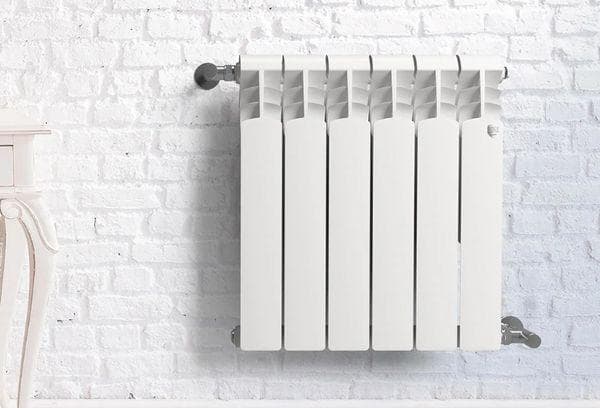
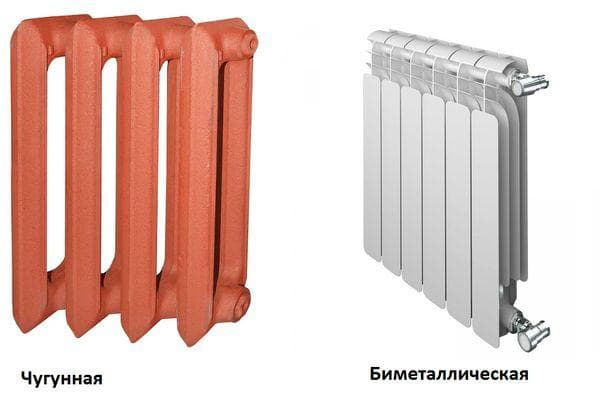
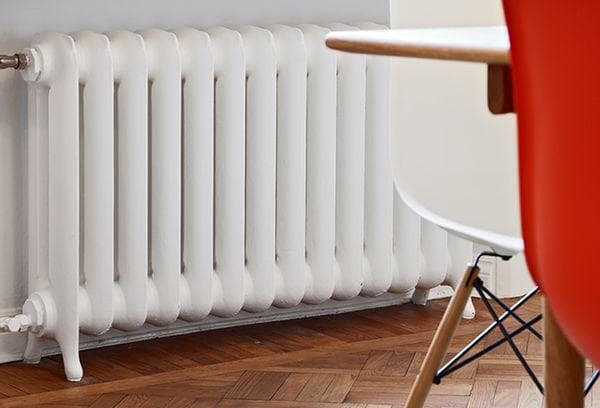
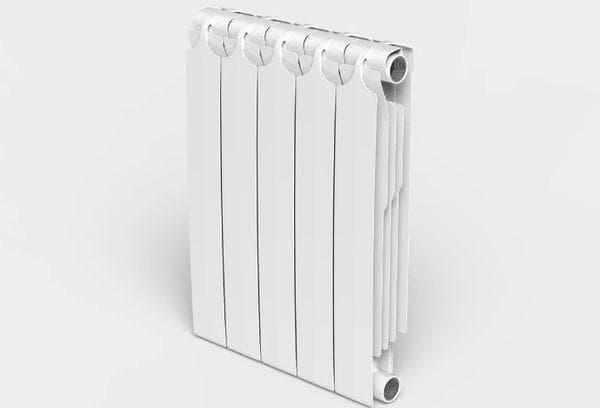
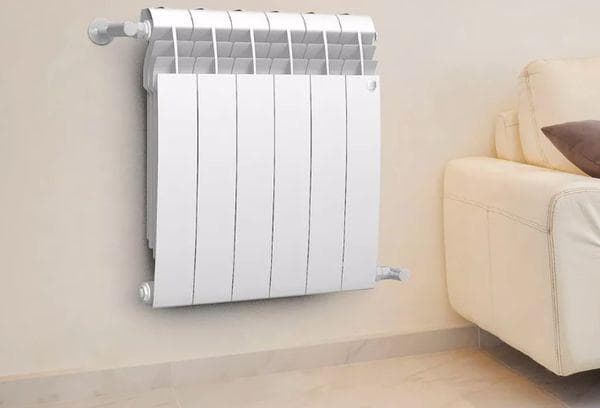
It all depends on the temperature of the water. And I don’t care what kind of battery it is.